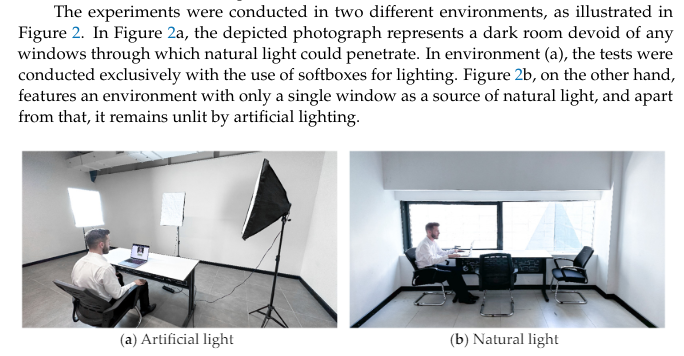The increasing popularity of neuromarketing has led to the emergence of various measurement methods, such as webcam-based eye-tracking technology. Webcam-based eye-tracking technology is noteworthy not only for its use in laboratories but also for its ability to be applied to participants online in their natural environments through a link. However, the complexity of e-commerce interfaces necessitates high performance in eye-tracking methods. This complexity and the applicability of webcam-based eye-tracking technology in various environments have raised research questions about how its performance changes depending on the type and location of lighting. To answer these questions, experiments were conducted with 30 users in two different experimental environments illuminated by artificial and natural methods, with the lighting from the left, right, and front. Participants were asked to focus on targets located in specially prepared graphics for the experiment. In the heatmaps obtained in the eye-tracking tests, the distance and angular difference between the focal point and the target point were measured using the polar coordinate system. The findings indicate that measurements taken with lighting coming from the center were more efficient in both natural and artificial lighting types and measurements taken under natural lighting performed 24% better than artificial ones. Web camera-based eye-tracking technology is a promising method. However, detailed statistical analyses have demonstrated that for complex interfaces like e-commerce, the position and type of lighting are crucial parameters.
https://www.mdpi.com/0718-1876/18/4/105

4.1. Procedure
Prior to the experiment, participants were informed about the eye-tracking method. A presentation was given to all participants regarding the calibration processes. Participants were informed that they would not experience any physical contact and their images would not be recorded by the camera; only data related to where they were looking on the screen would be collected. Both experimental environments were introduced to the participants before the experiment. Tests were conducted in each experimental environment with the lighting coming from the right, front, and left. Consequently, participants underwent three eye-tracking tests in the experimental environment with artificial light sources and three tests in the experimental environment with natural light sources. No distracting visual elements were present in the experimental environment, and the experimental setting was maintained in silence. The GazeRecorder software, which specializes in eye tracking and statistical analysis, was utilized in the experiment [65]. The reason for selecting this tool is its widespread use in scientific eye-tracking studies [65,68,69,70,71,72,73].
4.2. Collecting Data
The sample was formed using a simple random sampling method, consisting of 30 participants who do not use glasses or contact lenses and have an equal distribution of males and females. The age range of the participants varied from 18 to 27 years, with a mean age of 20.1. The research was conducted in November 2022 at the neuromarketing laboratory of a foundation university located in the capital city of Turkey. The data obtained during the study were stored in the cloud environment using the GazeRecorder infrastructure.